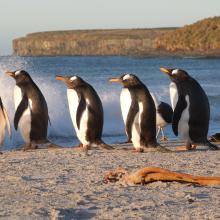
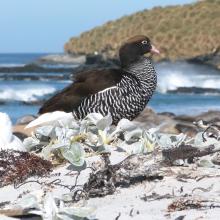
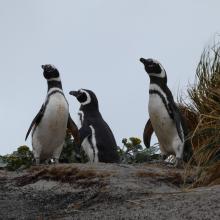
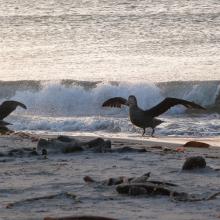
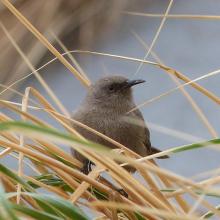
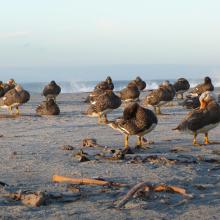
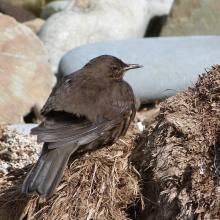
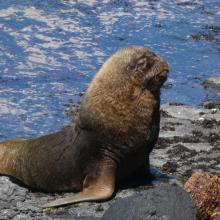
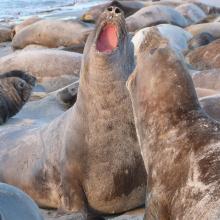
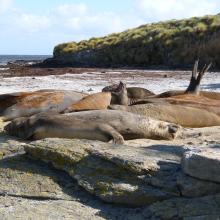
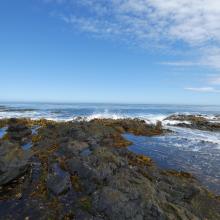
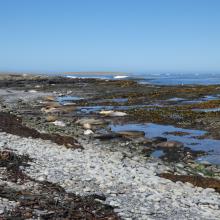
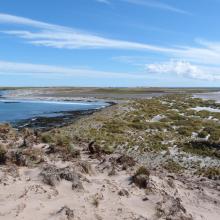
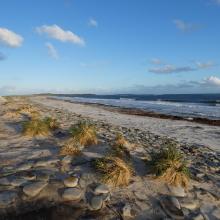
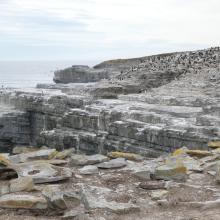
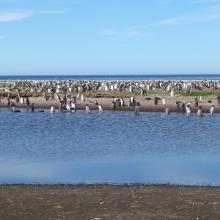
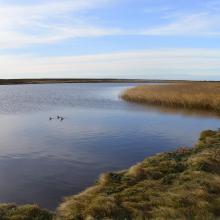
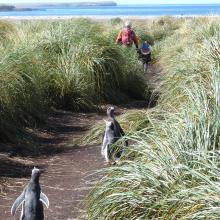
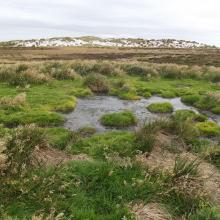
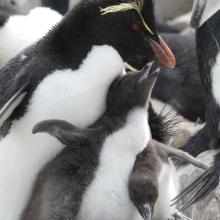
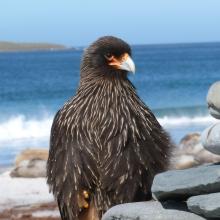
Sea Lion Island
- Country:United Kingdom of Great Britain and Northern Ireland (Overseas territories)
- Site number:1104
- Area:1,655 ha
- Designation date:24-09-2001
- Coordinates:52°26'S 59°05'W
Materials presented on this website, particularly maps and territorial information, are as-is and as-available based on available data and do not imply the expression of any opinion whatsoever on the part of the Secretariat of the Ramsar Convention concerning the legal status of any country, territory, city or area, or of its authorities, or concerning the delimitation of its frontiers or boundaries.
Overview
The Site is an isolated island, 17 kilometres off the southern tip of East Falkland. Unusually in the Falklands, the island is free from introduced cats, rats and mice, resulting in a diverse community of land birds and breeding seabirds. The island is made up of two rocky plateaus, well vegetated with oceanic heath and mixed grassland on their higher points, joined by a broad sandy beach. It retains, for an inhabited and formerly farmed island, an unusually large stand of tussac grass round the coastline above the sandy or pebbly shores, although past overgrazing has resulted in erosion in some areas. There are permanent pools and boggy ground which provide habitat for waterbirds. The South Atlantic elephant seal (Mirounga leonine) and southern sea lion (Otaria byronia) use the Site for breeding. One of the largest breeding populations in the world of the globally threatened southern rockhopper penguin (Eudyptes chrysocome) is present. The Site is used for nature-based tourism, and it counts up to 2,000 visitors a year. The main threat is the accidental introduction of alien species by visitors. Climate change and a drying climate could also severely impact the island.
Administrative region:
Falkland Islands
- National legal designation:
- National Nature Reserve - Sea Lion Island
- Last publication date:22-12-2023
Downloads
Ramsar Information Sheet (RIS)
Archived RIS
Site map
Additional reports and documents
- Other published literature
